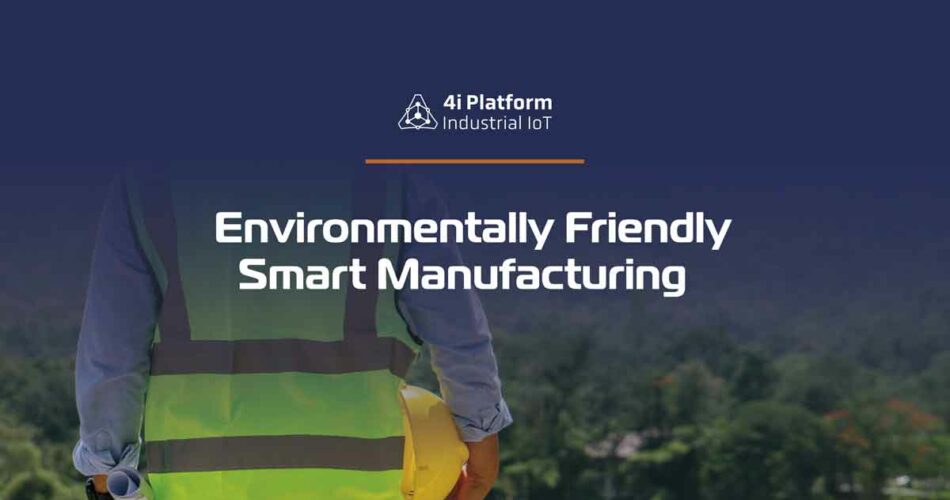Up until a few years ago, the main purpose of a manufacturing company was to make good quality products and make a profit. Pollution and climate change were not a concern then. Dumping waste into the ocean and rivers, overuse of fossil fuels, and the emission of harmful gases into the atmosphere are but a few practices that used to be considered standard. Nowadays, business leaders are more concerned about the environment, and sustainability forms part of their business strategy. The manufacturing sector is no exception and has started to adopt different sustainable manufacturing.
Sustainable Manufacturing Overview
In short, sustainable manufacturing is the practice of creating manufactured products using economically-sound processes with a minimal impact on the environment and the efficient use of energy and natural resources. Many companies seek to improve performance and reduce energy consumption with the help of IoT devices.
Companies that go green and adhere to environmentally friendly practices see several benefits, such as decreased production and regulatory compliance costs, less waste of energy and raw materials, improved brand recognition, and higher employee retention rates.
How Data Helps Reduce the Carbon Footprint
Industry 4.0, or the Fourth Industrial Revolution, is all about increased interconnectivity and automation in manufacturing. New technologies like the Internet of Things, cloud computing, data analytics, and AI are revolutionizing production facilities and operations. Smart factories rely on sensors, software, and robotics to collect and analyze data, which leads to better decision-making. In addition, smart processes and practices drive sustainability in manufacturing.
In order to reduce their impact on the environment and achieve high sustainable production rates, manufacturers need to collect and analyze data. Data from embedded sensors and interconnected equipment is central to sustainable manufacturing.
The sensors and thermostats of a smart heating and cooling system monitor and regulate the temperature, resulting in energy and cost savings. Also, some applications show the power flow of a plant and provide KPIs in real time. With this information in hand, manufacturers can optimize the use of resources.

The data collected by predictive analytic tools, like predictive monitoring and maintenance, help ensure optimal operating efficiency. By fixing issues like bottlenecks, faulty temperature readings, or machine downtimes, predictive analytics help reduce the risk of defective batches and optimize the use of resources. Predictive maintenance monitors equipment condition to minimize breakdowns, reducing costs and downtime, as well as contributing to sustainable manufacturing.
Industry 4.0 can provide the tools necessary for monitoring and controlling greenhouse gas emissions. These solutions can test CO2 circulation, for example. Then, engineers can devise emission reduction or CO2 capture and recycling strategies.
Precious non-renewable resources like water also come into play. Certain IoT-enabled applications monitor water consumption and wastage. Then, data analysis will show where to make changes for smarter use of this resource.
Some Ways to Implement Sustainability in Manufacturing
First, sustainable manufacturing involves avoiding polluting the local environment, reducing harmful gas emissions, reducing waste of raw materials, decreasing consumption of energy and non-renewable resources, and increasing workers’ safety.
Second, manufacturers have a range of practices and initiatives they can adopt to reduce their carbon footprint and make a positive impact on the community.
- Replace fossil fuels with renewable energy.
- Use energy-efficient lighting that is Energy Star-certified.
- Install smart thermostats and plugs to reduce energy consumption.
- Go paperless by using IoT devices as an alternative. Also, use interactive LED screens instead of labels.
- Use IoT devices to track inventories in real time and optimize and automate supply chain management.
- Recycle and reuse materials to optimize the use of energy and reduce waste.
- Implement automation to save on lighting and heating and improve plant safety.
- Recycle factory water and use it for cooling or landscaping.
Sustainable Manufacturing: The Takeaway
The industrial sector is one of the largest contributors to greenhouse gas emissions. So, sustainable manufacturing processes and technologies are crucial to reduce the carbon footprint and making a positive impact on the environment and the community. Ideally, companies will reach net-zero emissions before it is too late.





